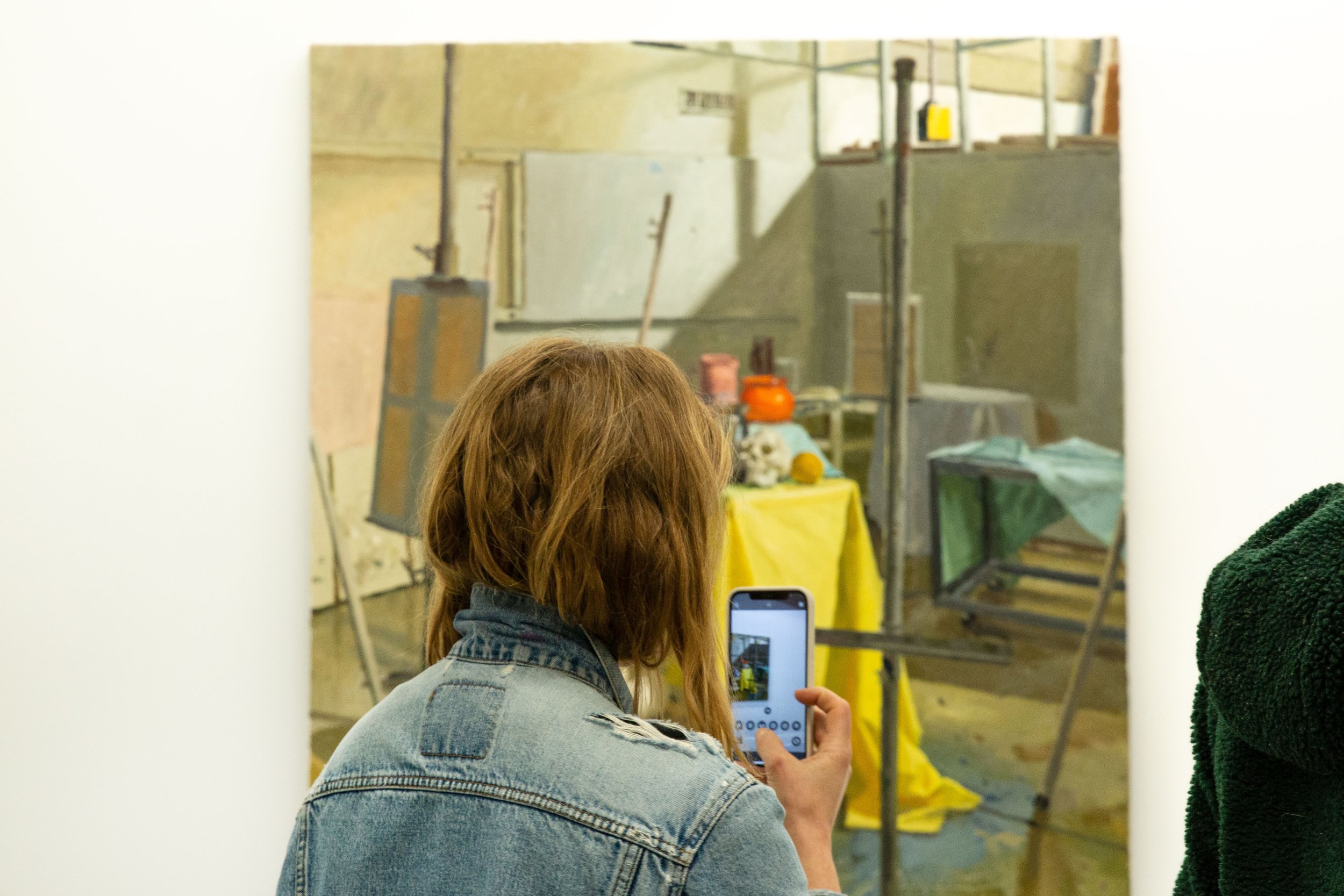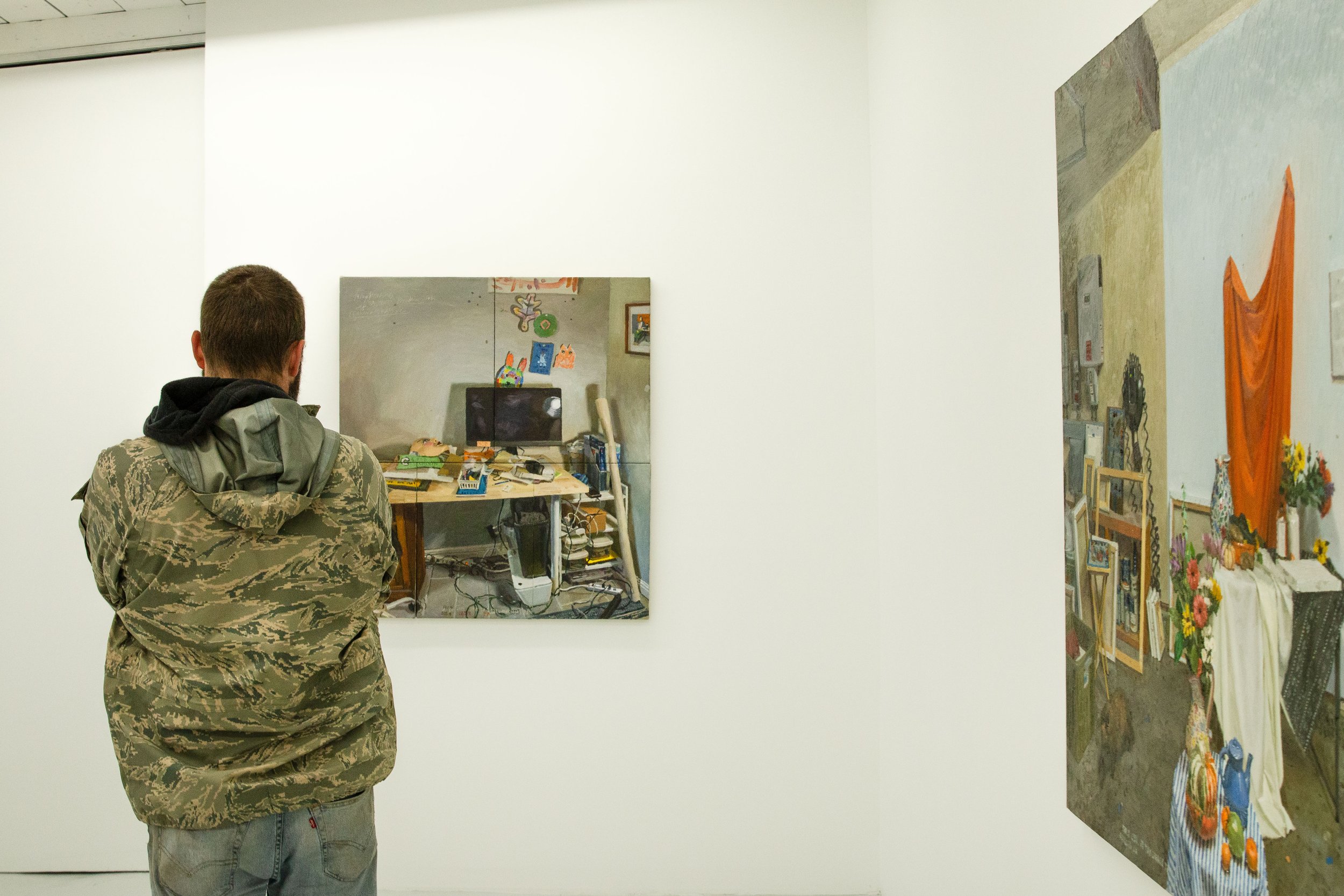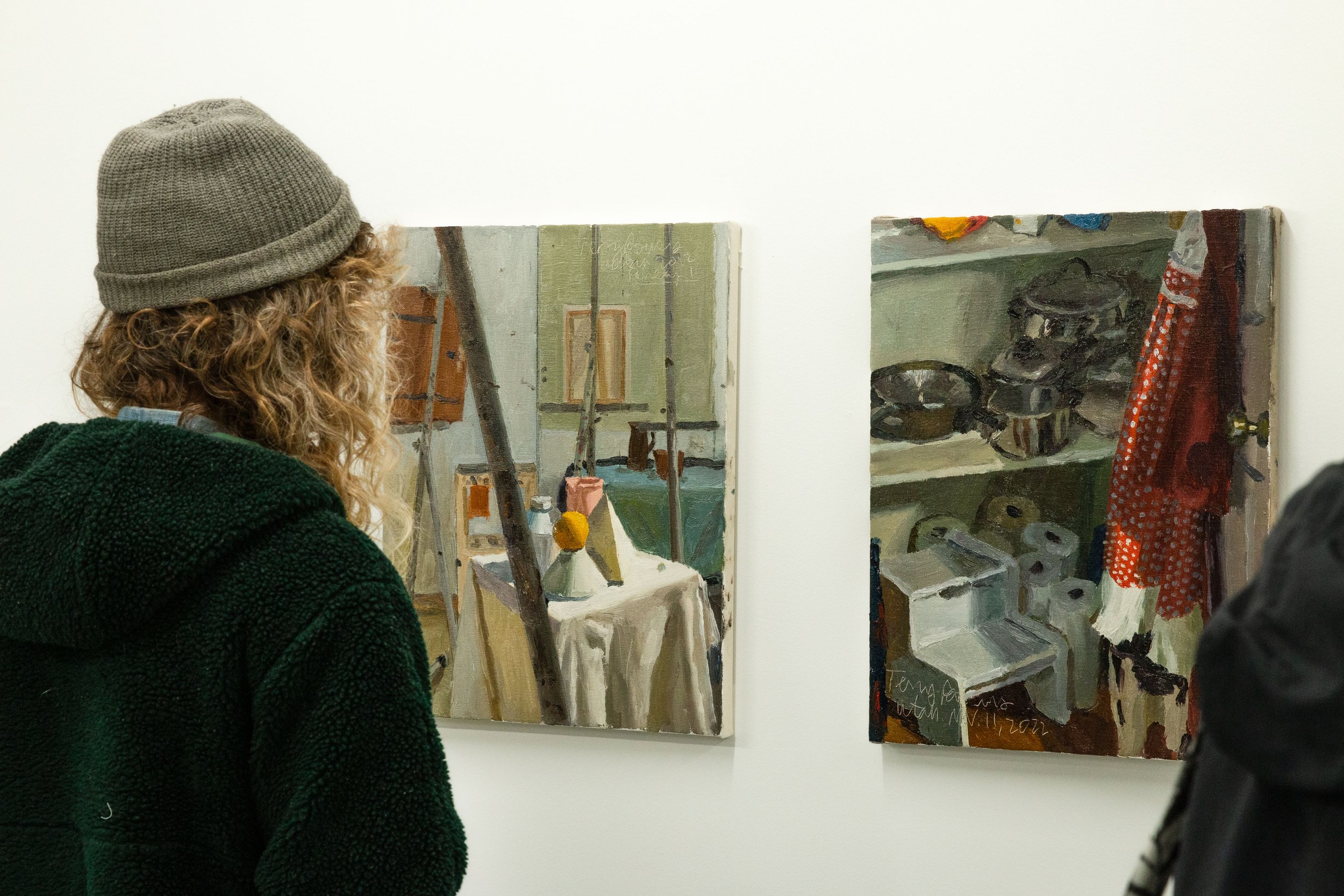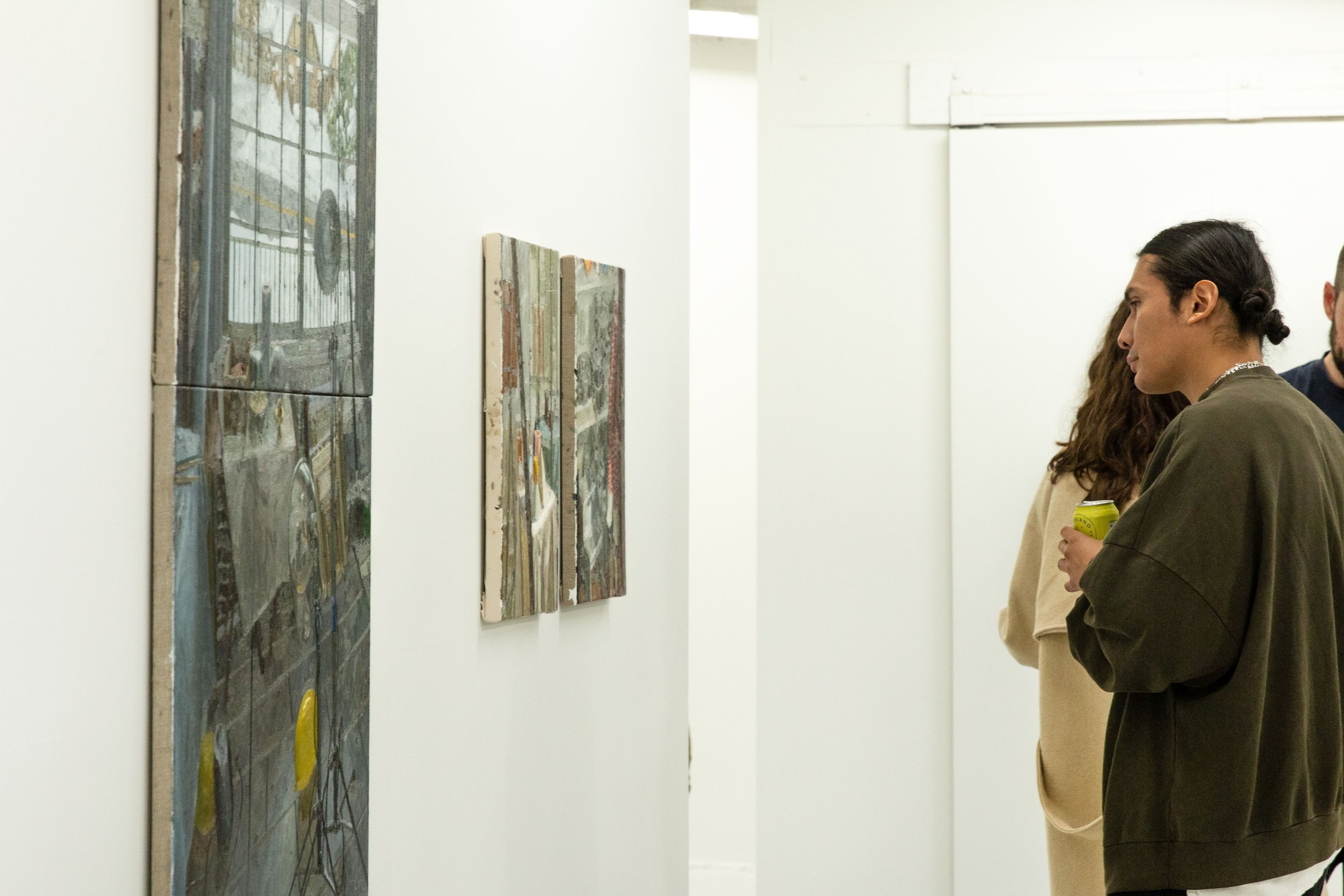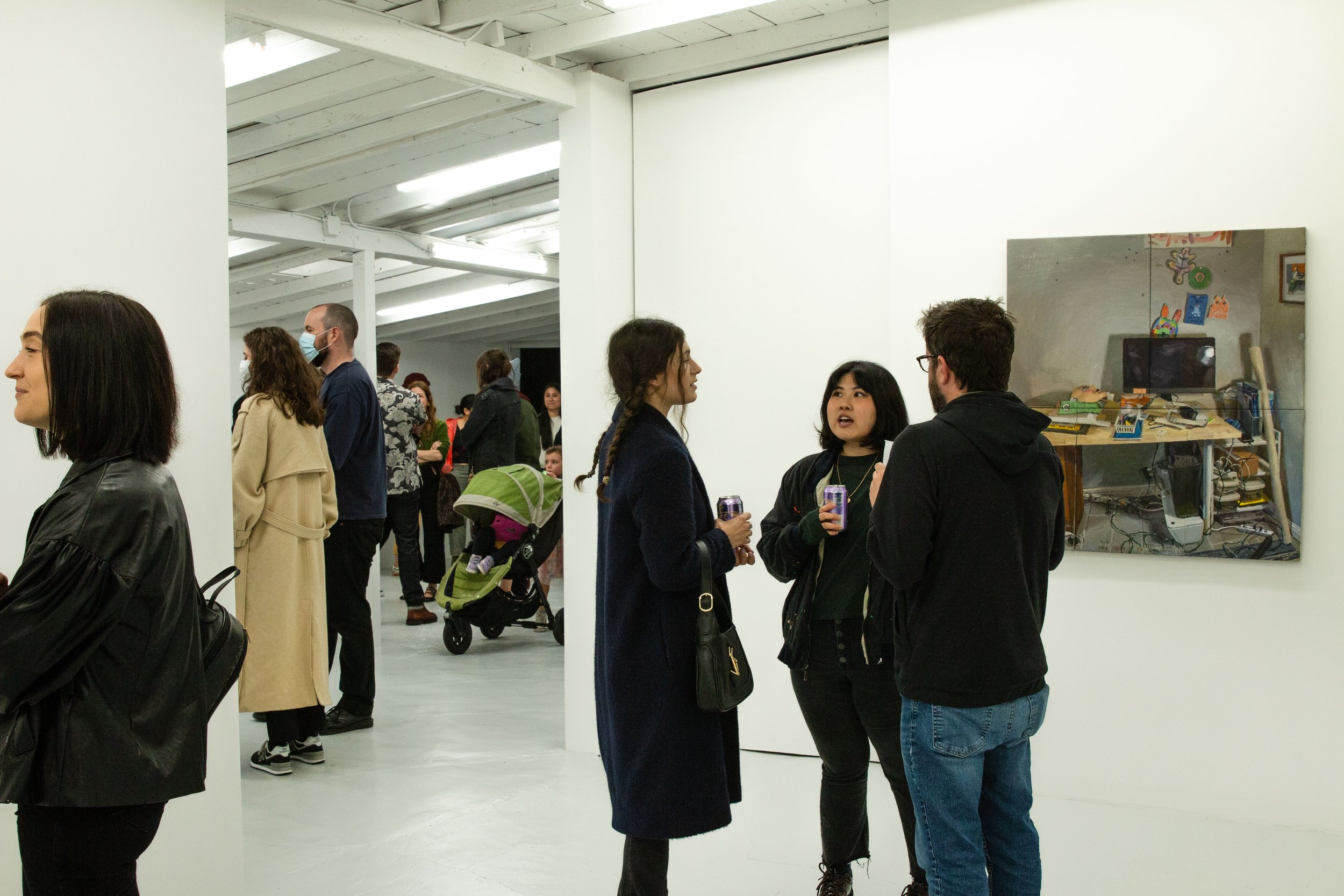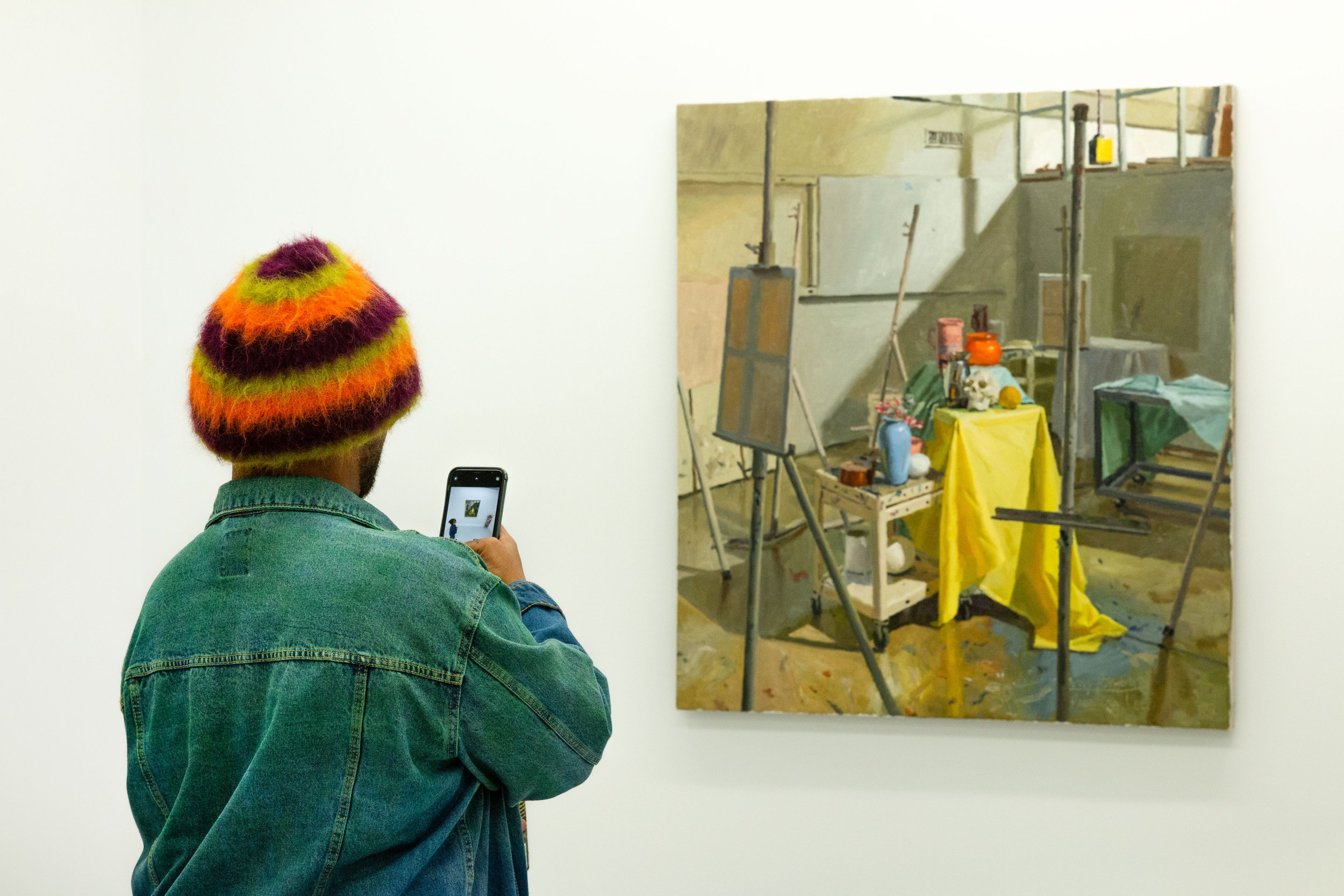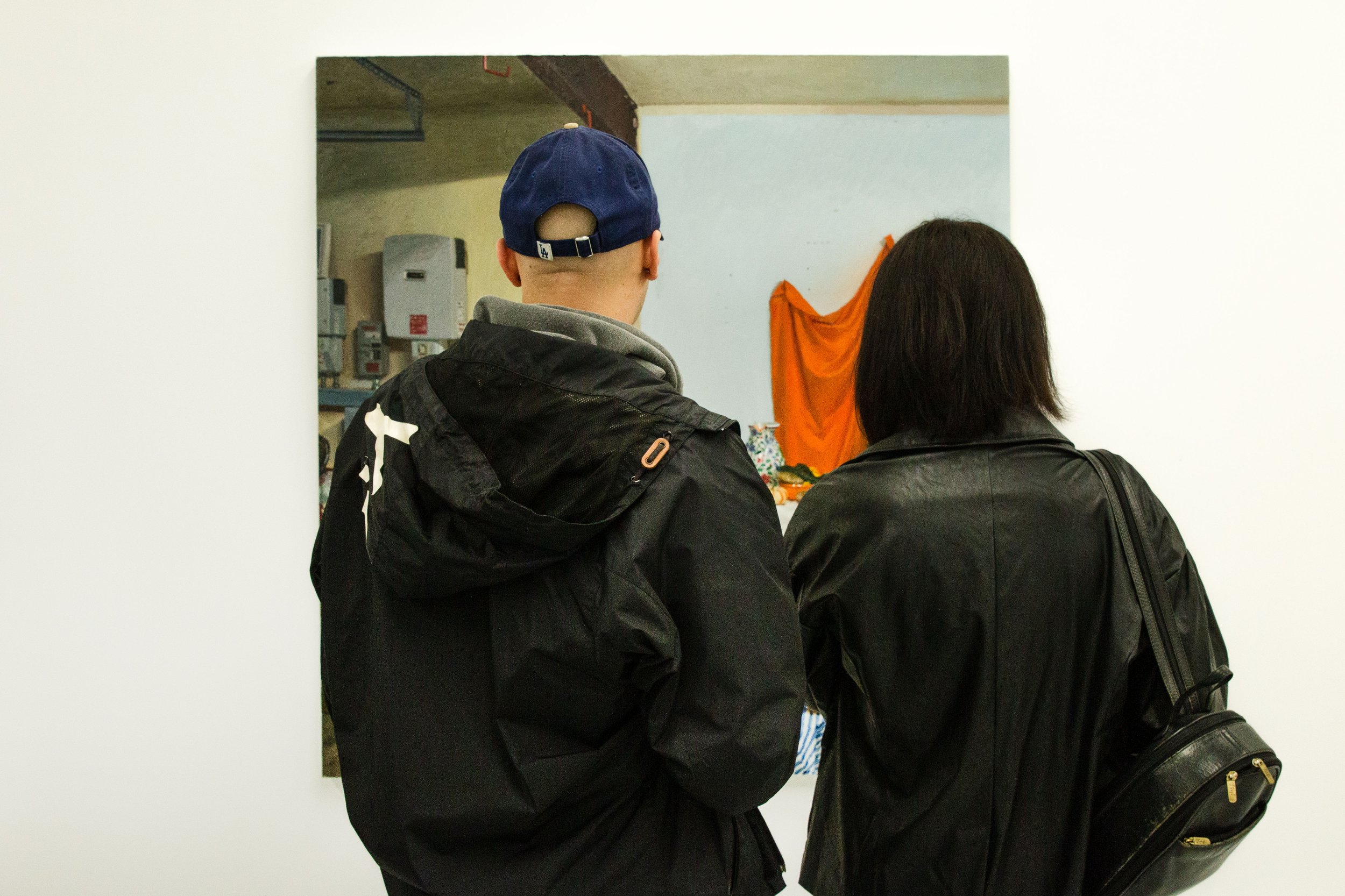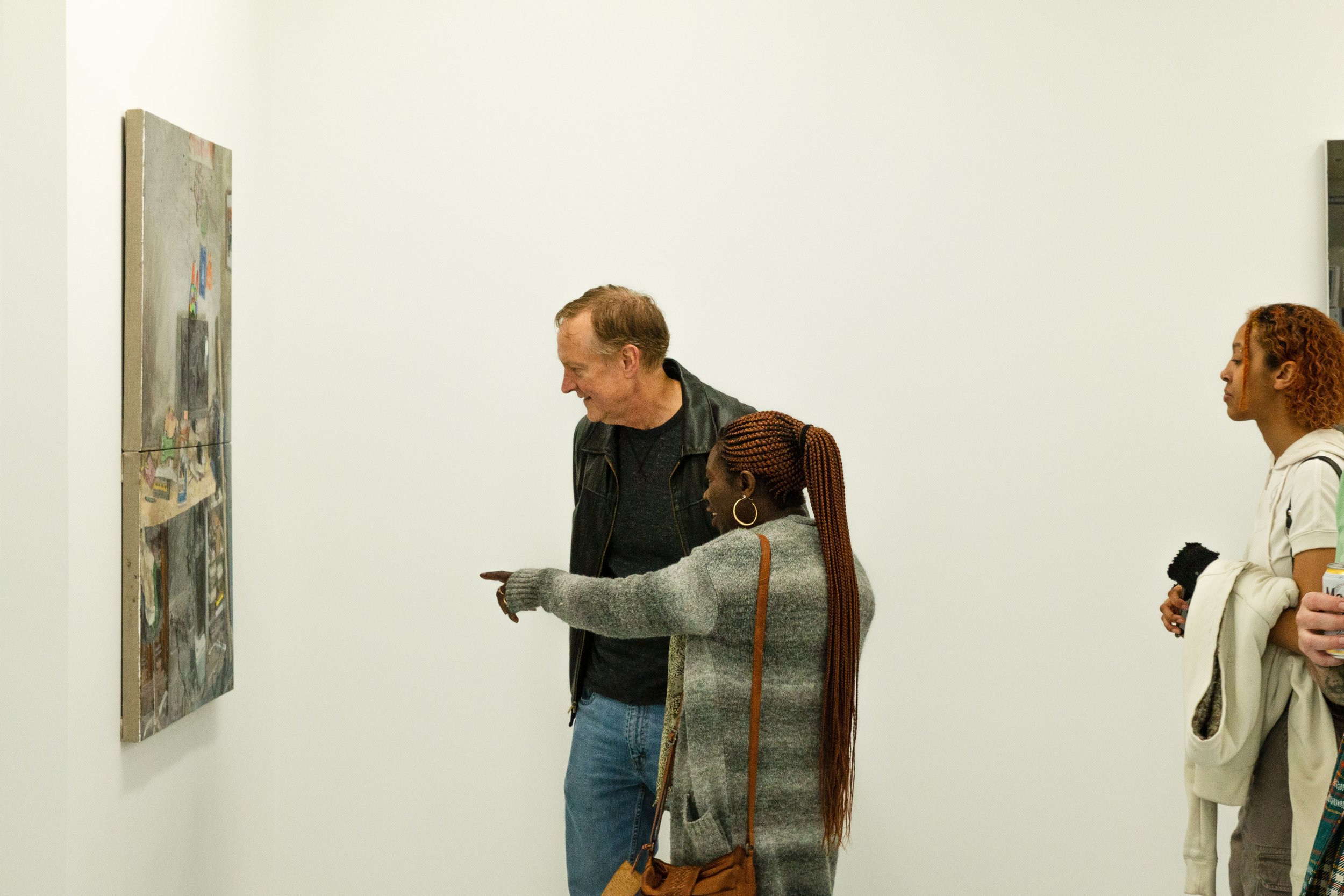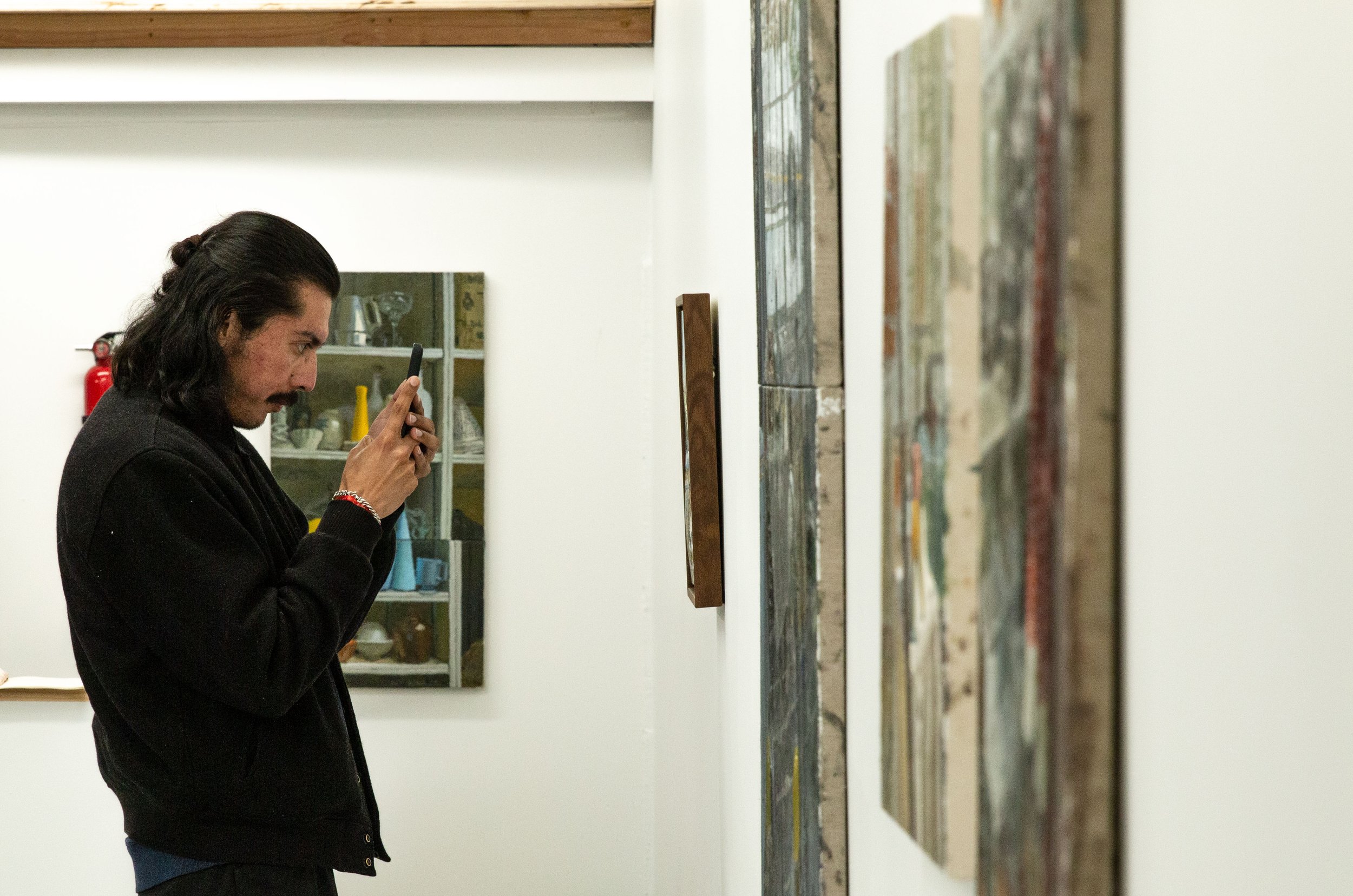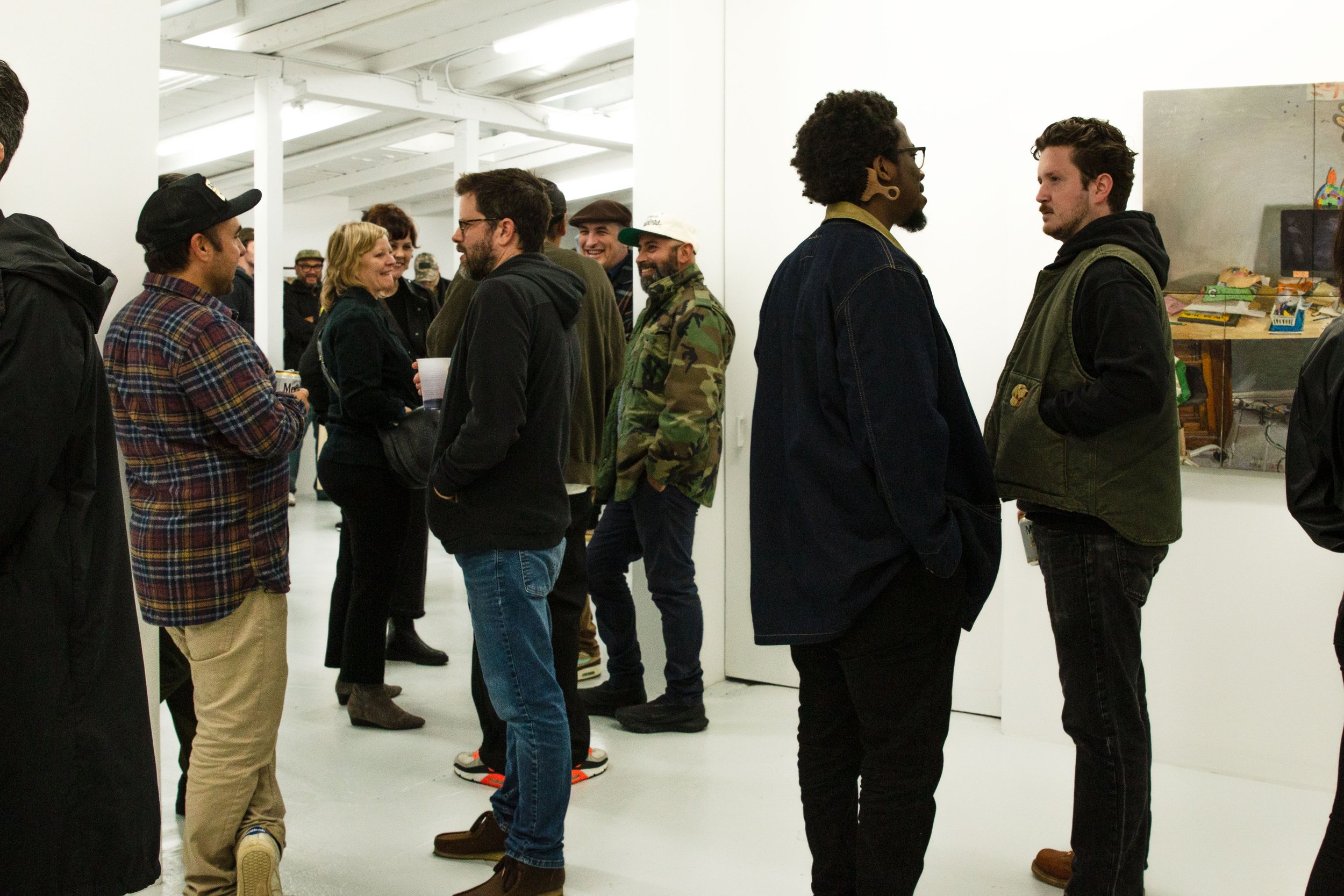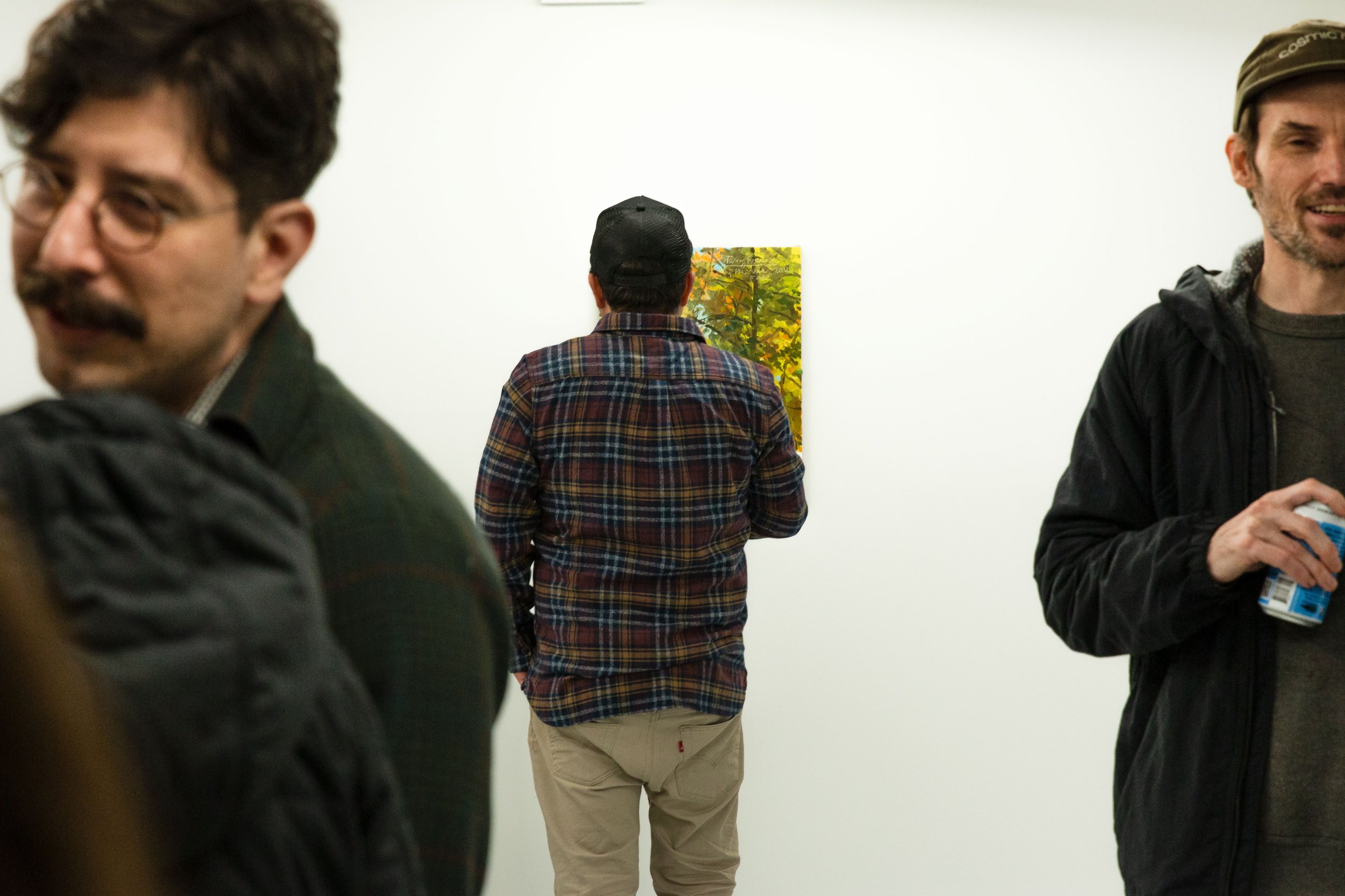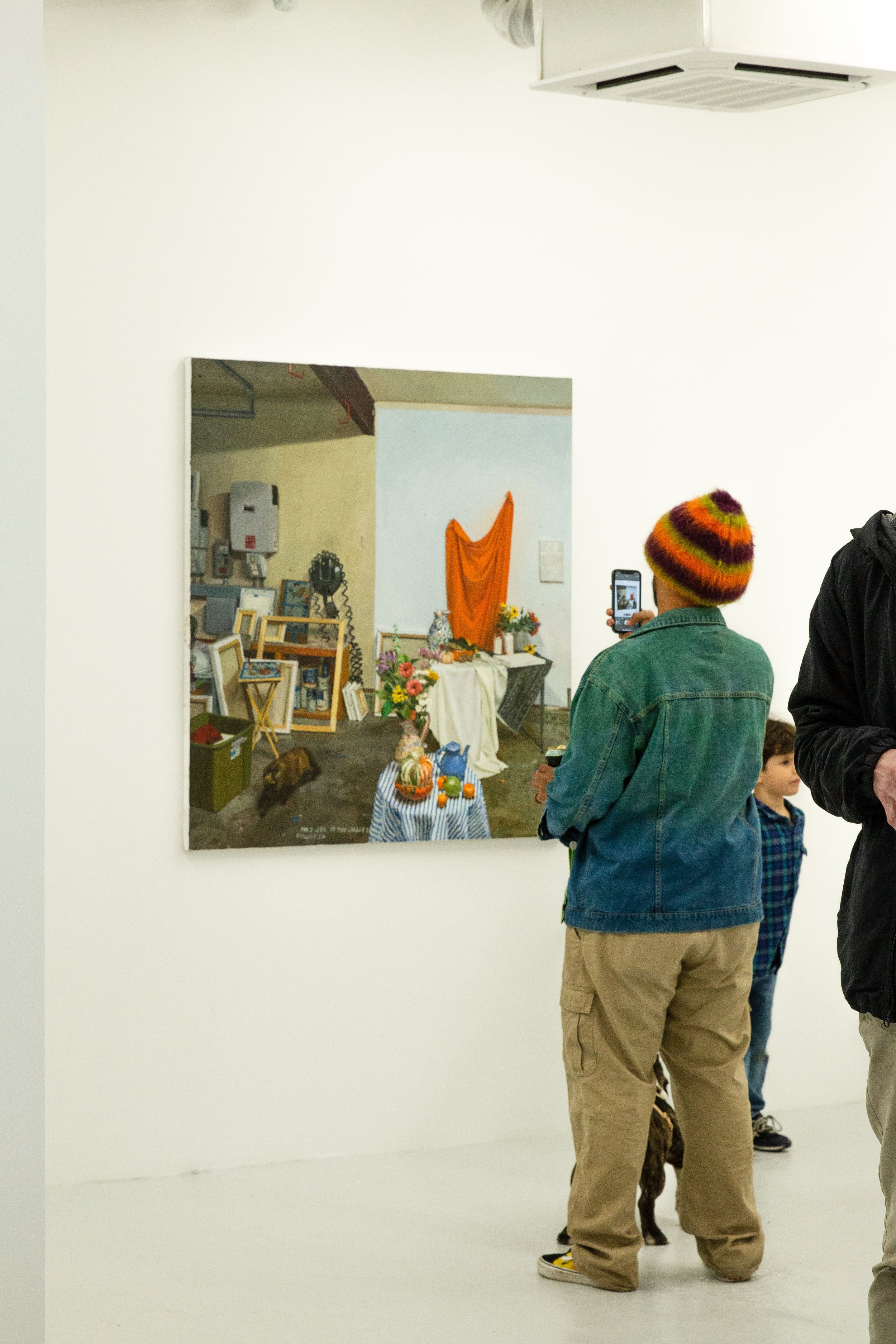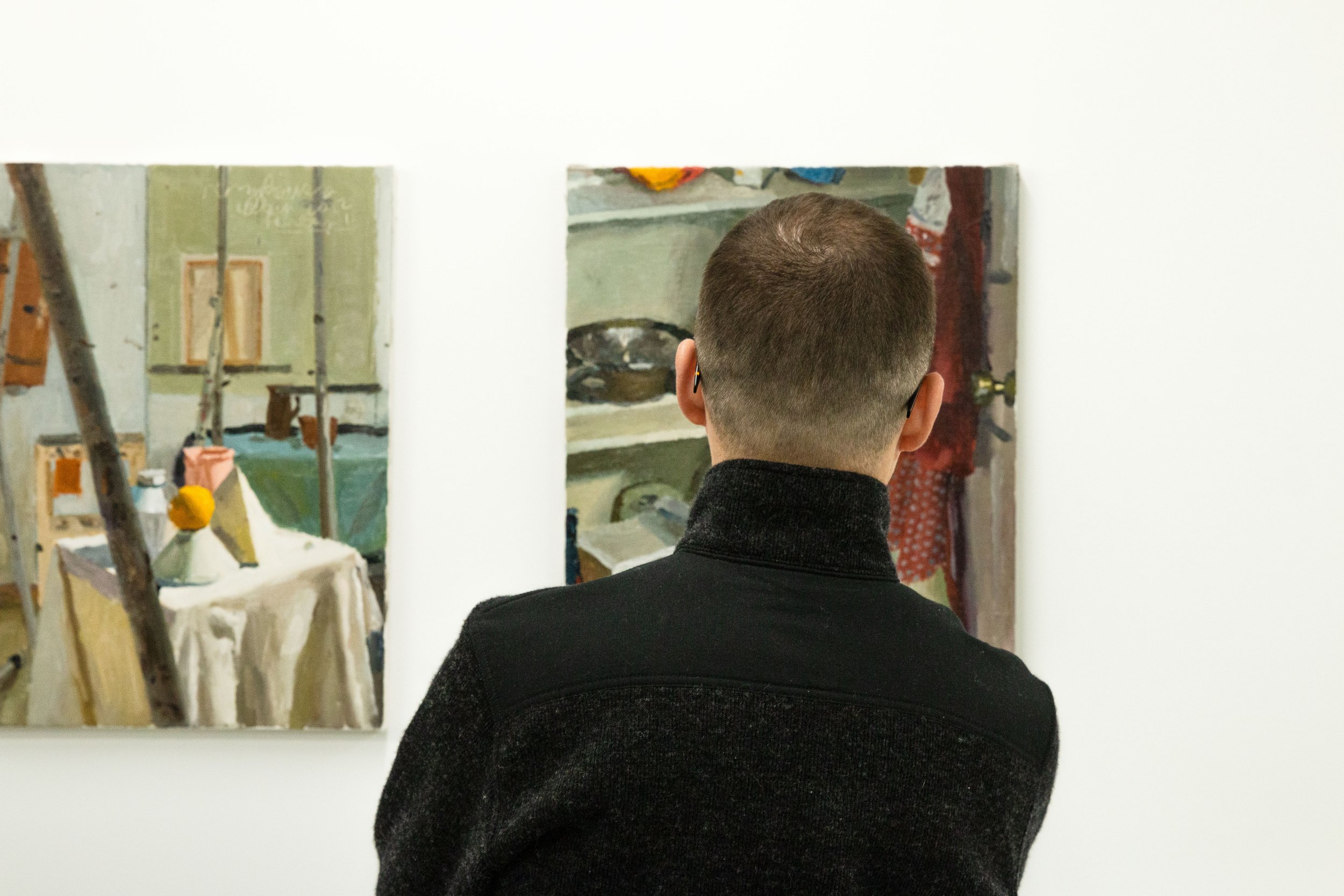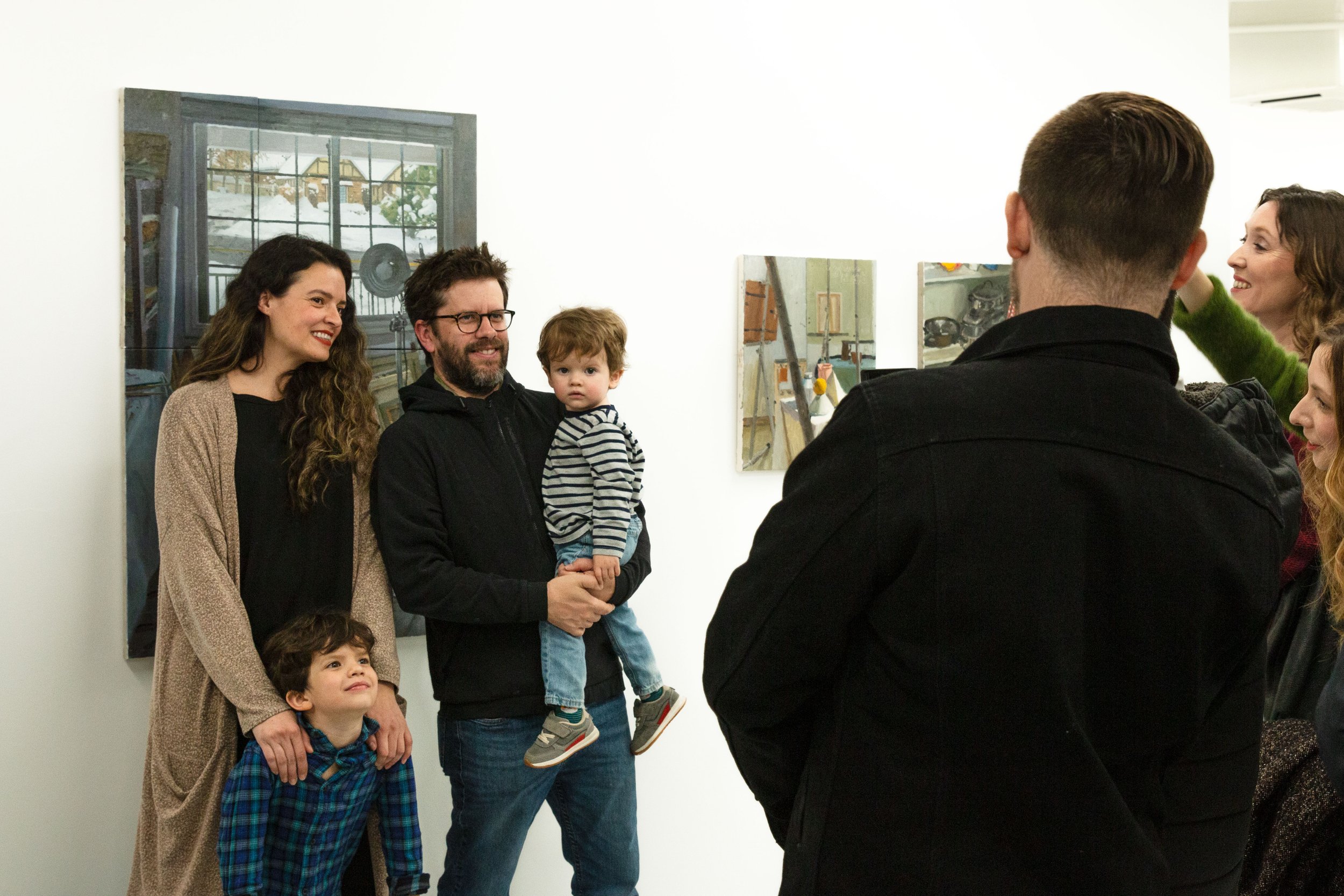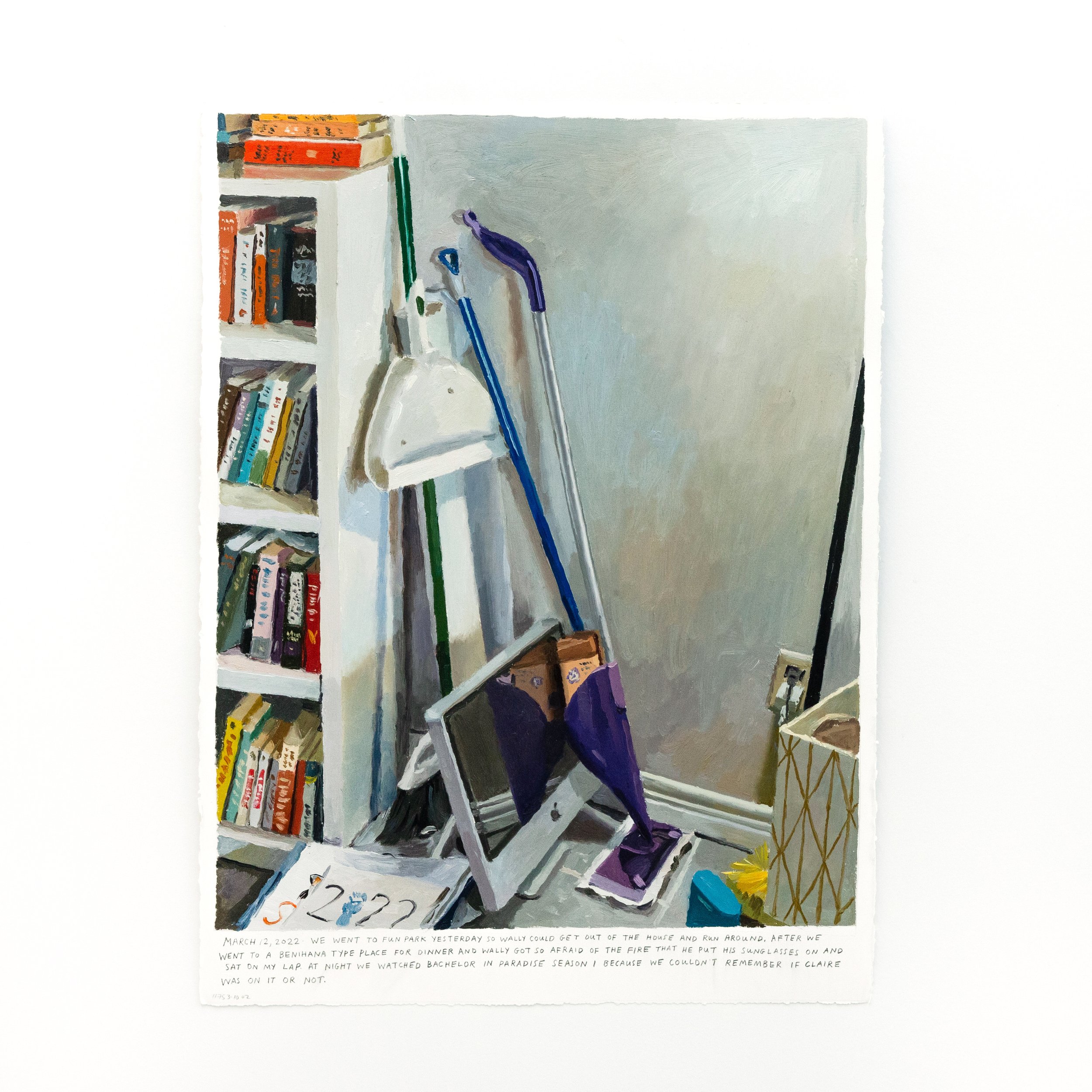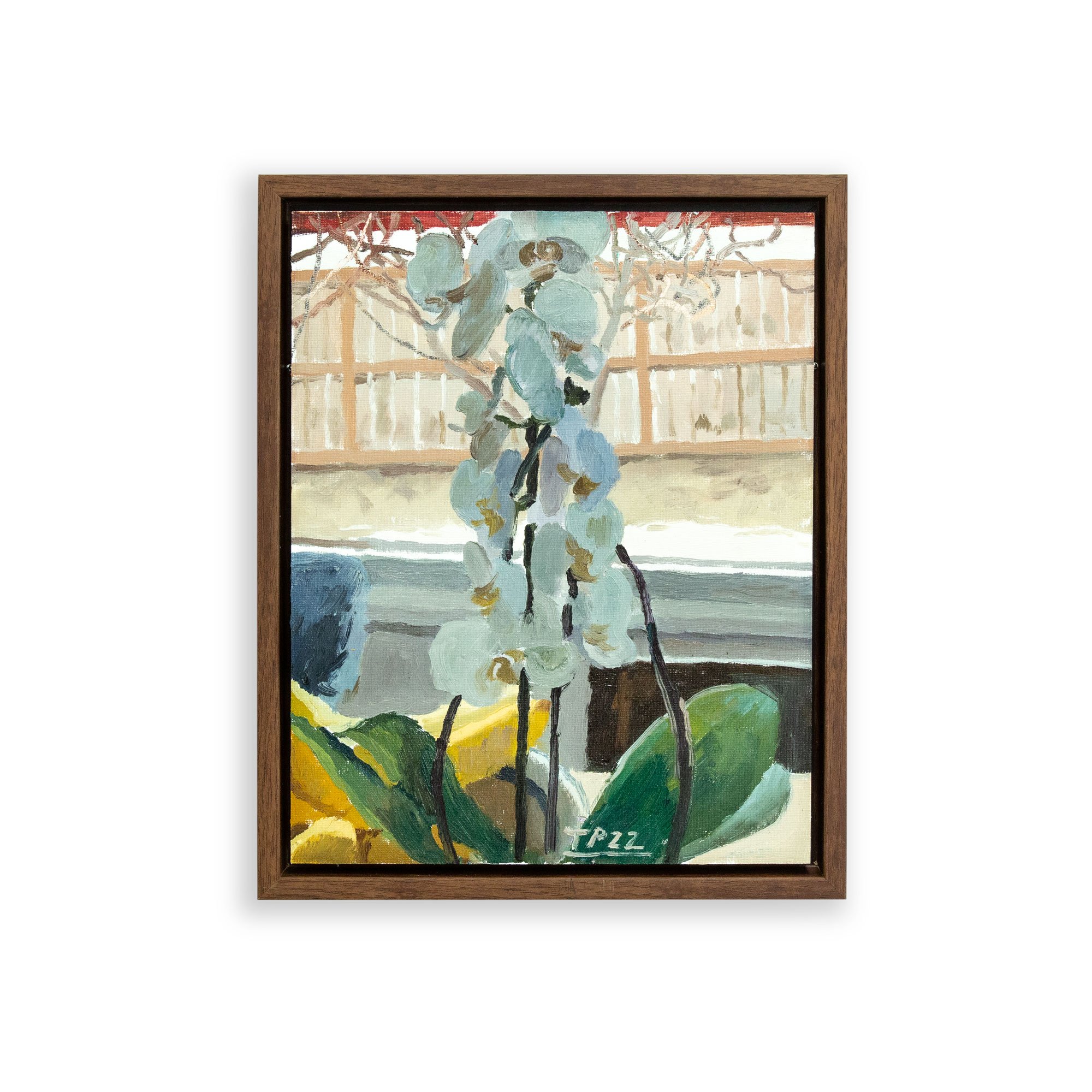Proof of Life | Terry Powers
Proof of Life
Opening Reception: Saturday March 11, 6 – 9pm
Exhibition Dates: March 11 – April 22, 2023
Guerrero Gallery is proud to present Proof of Life, the third solo exhibition by Terry Powers with the gallery. Painted directly from observation, Powers creates lush oil paintings depicting scenes around the artist’s house, in the family’s garden, still lives with easels strewn about at the university where Powers teaches and other sites from around the school and increasingly around the town of Logan, Utah where Powers and his family relocated from the Bay Area nearly two years ago. Composed yet never constructed, Powers revels in the mess of the day-to-day, lovingly painting a stack of papers waiting to be filed, or a defiant tangle of cords. As Proof of Life suggests, these are statements of one’s existence, of the lives lived by Powers and his family yet largely seen through the spaces the artist inhabits. Painting for Powers acts as a form of white noise, a distraction, and a means of breaking away from the chaos and anxiety of one’s daily life. Through performing the act of painting, Powers generously provides this moment of respite and introspection for the viewer as well–a sensation that can be so fleeting amidst the din.
One notices quickly scanning the exhibition that Proof of Life contains but one human figure, a self-portrait of the artist, and even then Powers remains backlit largely draped in flattening shadow. Yet despite the lack of human form, the palpable sense of presence is constant–these spaces are lived in, played in, and fully used. Devoid of figures, the objects, scenes, and places that the artist chooses to paint naturally take on an amplified significance and emotional heft. A leaning striped umbrella cast in shadow in front of a leaf-strewn lawn feels somewhat somber, whereas a haphazard pile of brooms and mops, and a computer monitor strewn at their feet emanate a feeling of exhaustion.
Worm at the Core, 11x14 in, Oil on Canvas, 2022 inquiries
Dead leaves, Oil on Linen, 20x24 in, 2022 inquiries
October, Oil on Linen, 20x24 in, 2022
David, Oil on Linen, 16x20 in, 2022 inquiries
Providence, Oil on Canvas, 11x14 in, 2022 inquiries
Winter, Oil on Linen, 40x36 in, 2023 inquiries
Painting 5, Oil on Linen, 11 x 14 in, 2023 inquiries
Foxridge, Oil on Linen, 16x20 in, 2022 inquiries
Creeping Death, Oil on Linen, 46x38 in, 2022-2023
Untitled, Oil on Linen, 54x50 in, 2021 inquiries
Painting 1, Oil on Linen, 44x40 in, 2023 inquiries
John's Kiln, Oil on Linen, 16x20 in, 2022 inquiries
Flour Mill, Oil on Linen, 16x20 in, 2022
Painting 4, Oil on Linen, 16 x 20 in, 2022
Additional Works Available
Bluebird, Oil on Linen, 24 x 30 in, 2023 inquiries
Broken Machine, Oil on Linen, 20 x 16 in, 2022 inquiries
Drawing 1, Oil on Linen, 44 x 40 in, 2023 inquiries
January 12, Oil on Paper, 22 x 30 in, 2022 inquiries
June 2, Oil on Paper, 22 x 30 in, 2022
March 12, Oil on Paper, 22 x 30 in, 2022 inquiries
Orchid, Oil on Canvas, 11 x 14 in, 2022 inquiries
FAV 209, Oil on Canvas, 11 x 14 in, 2022 inquiries
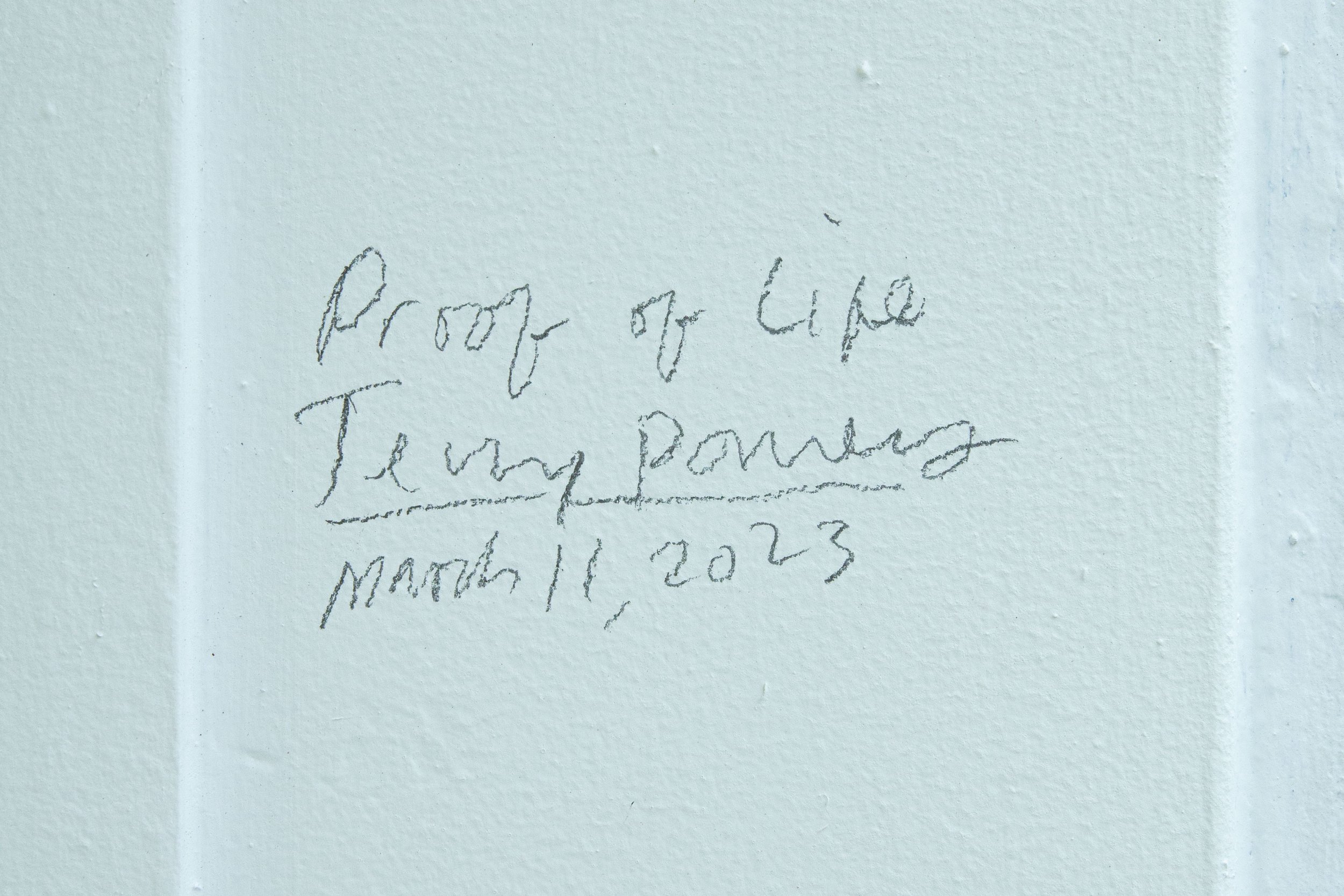


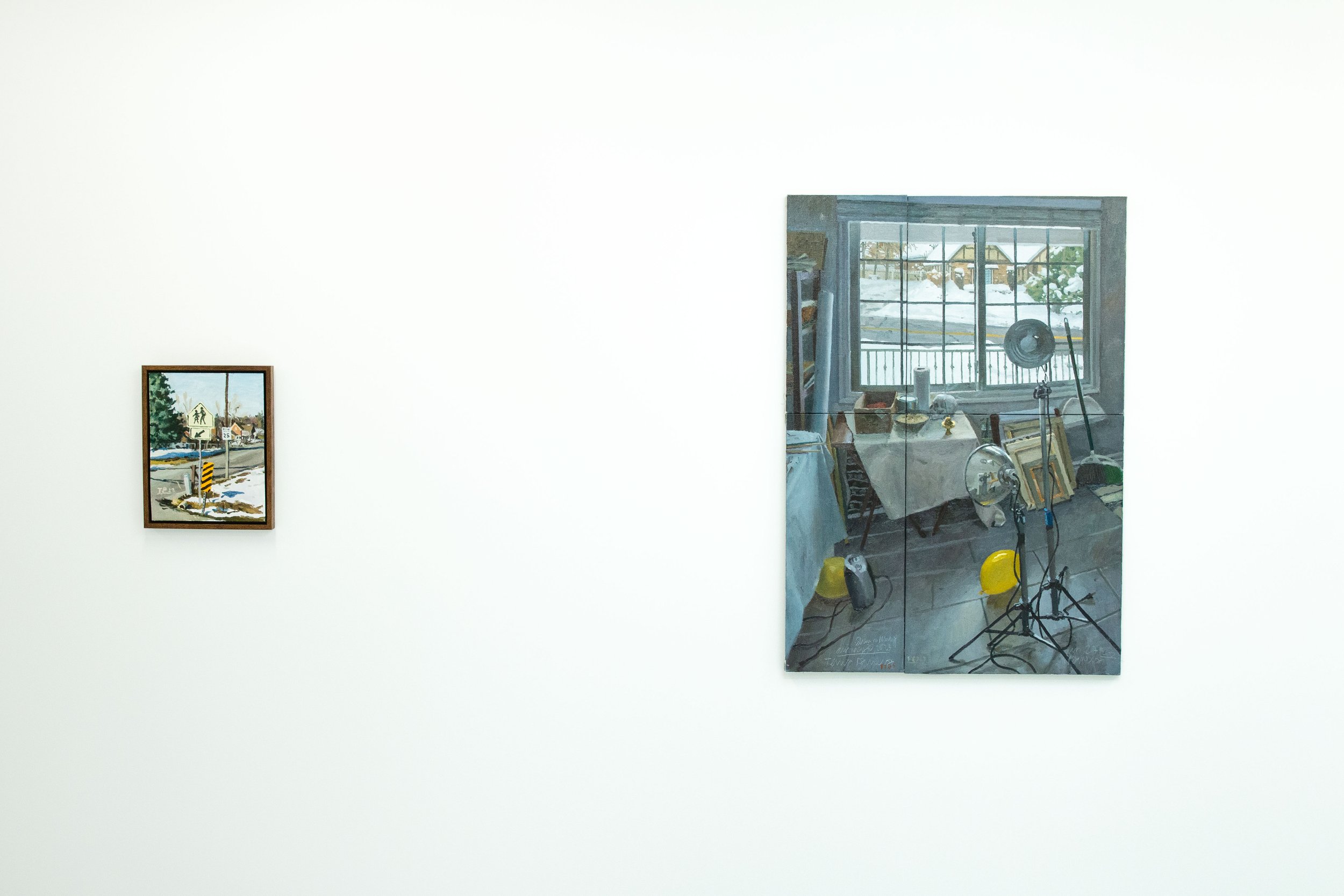
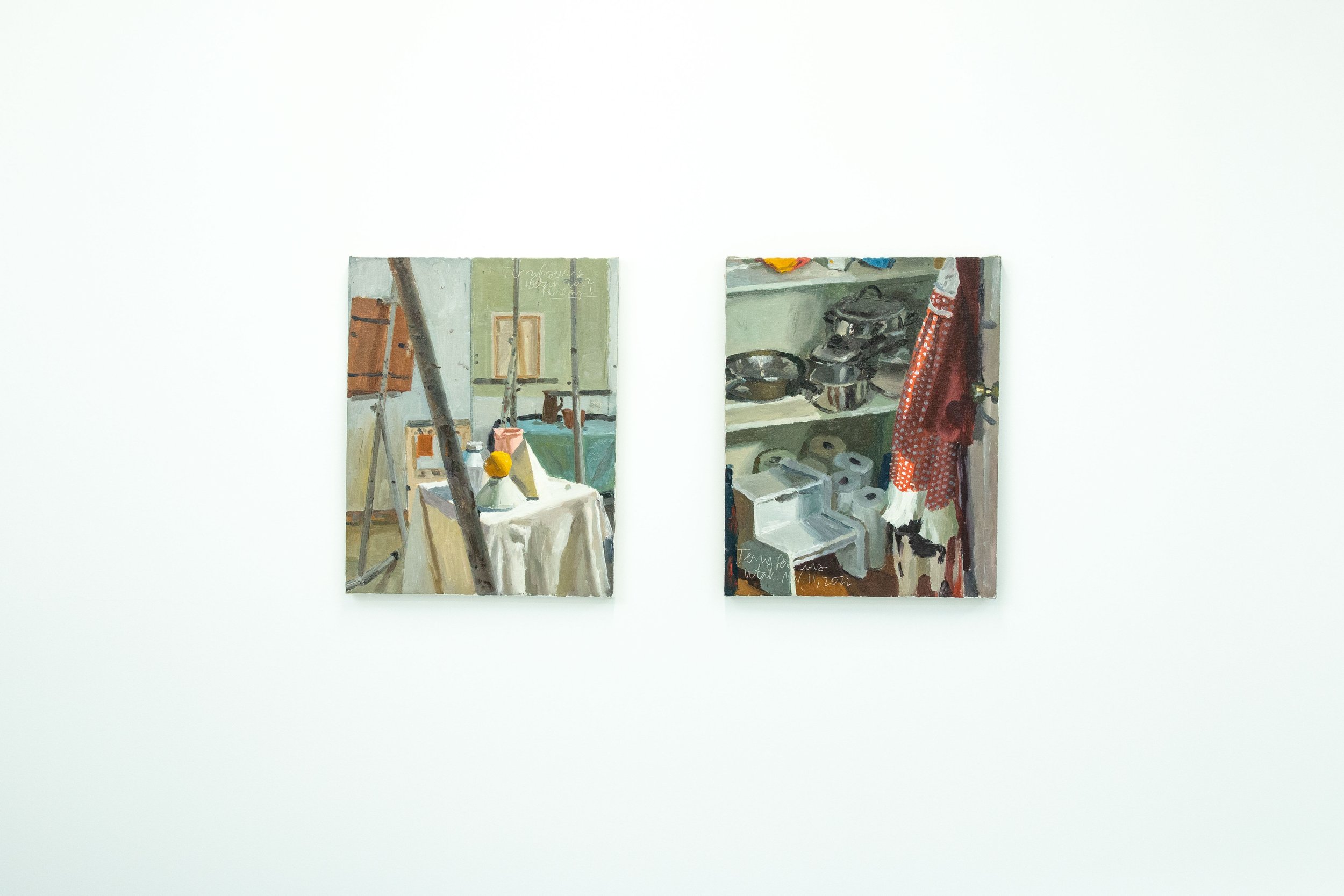

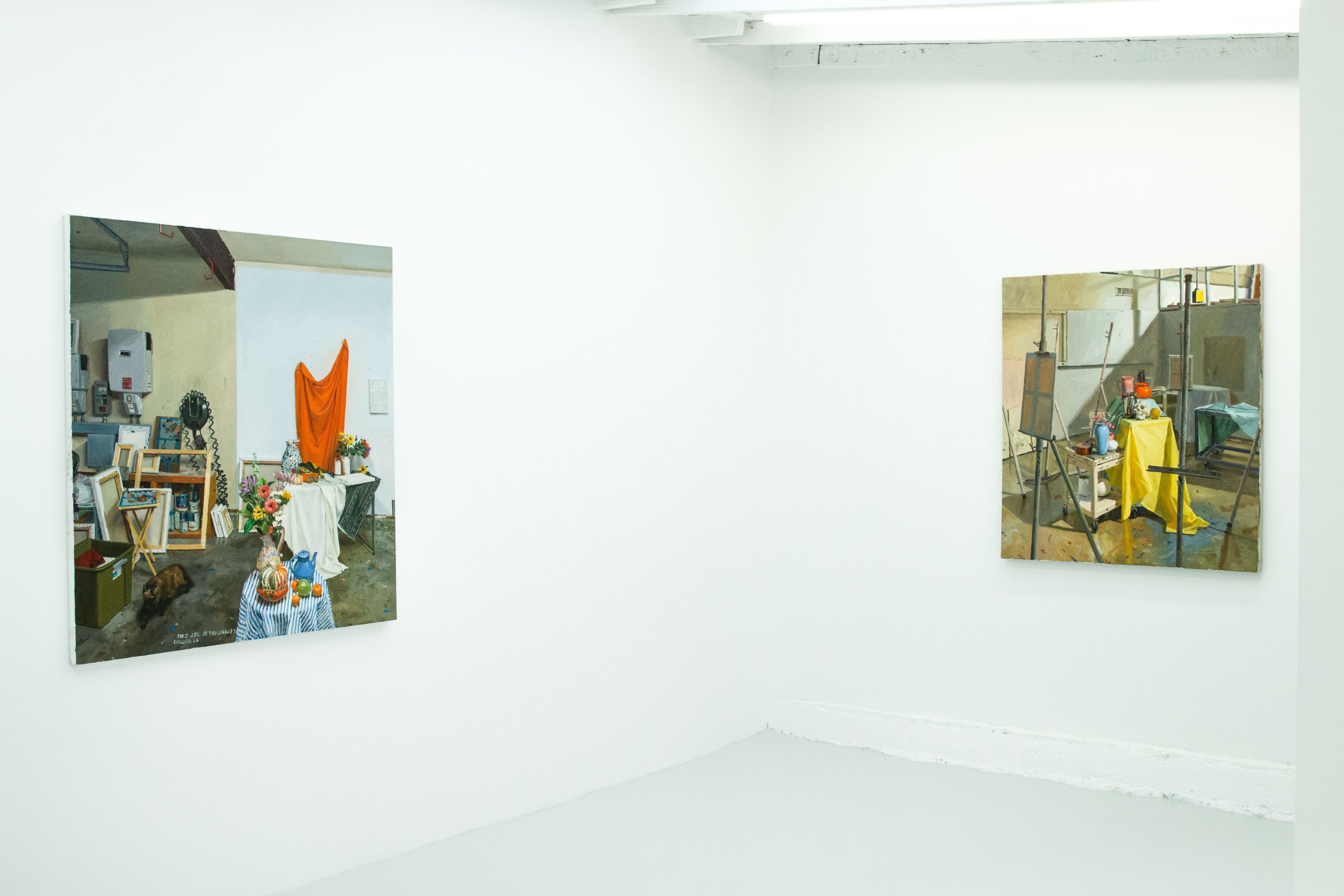
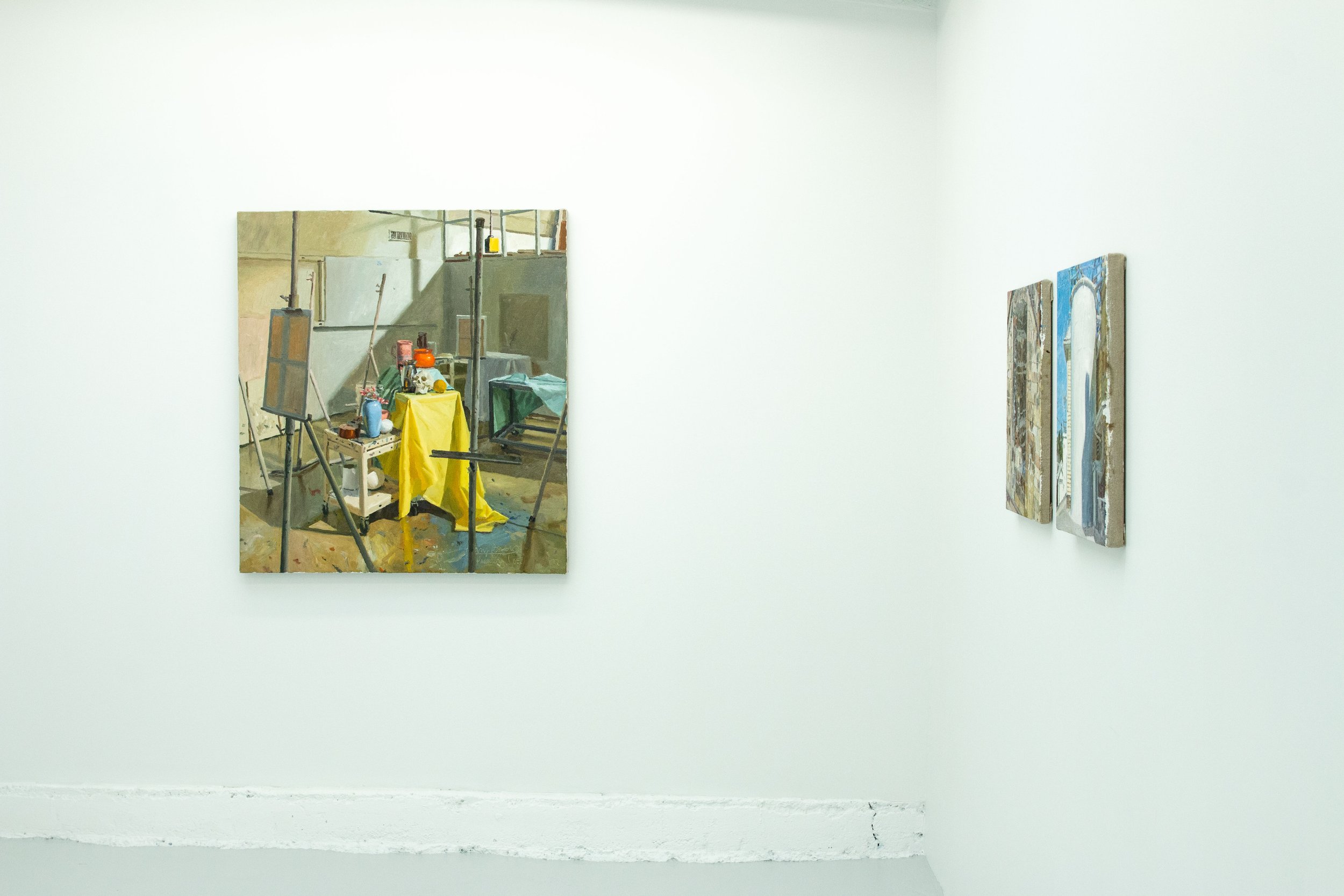


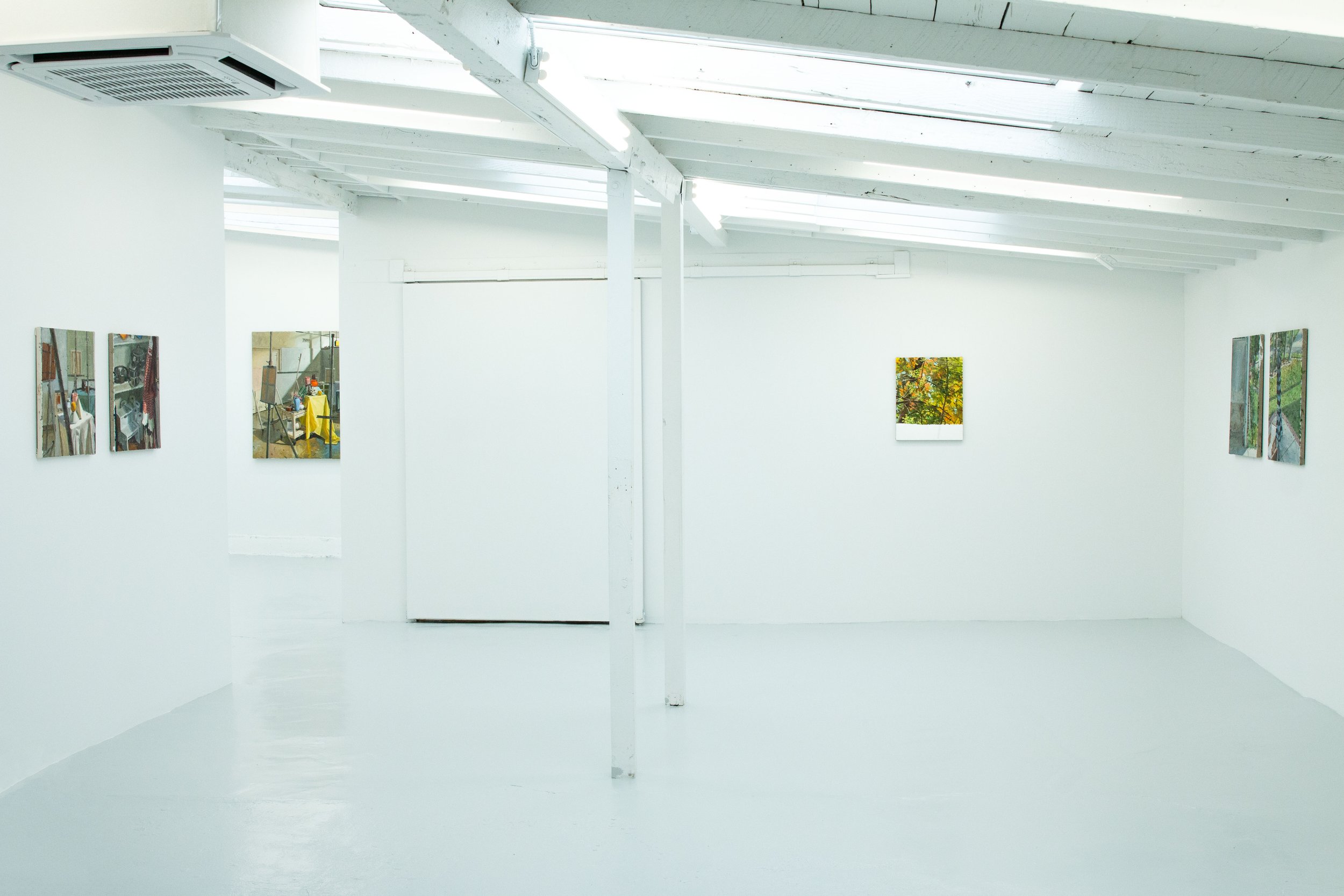
Proof of Life
Powers notes that he only takes interest in painting a space that he truly knows, connects with, and feels comfortable within, evidenced by the large number of paintings created within the artist’s family home. Yet slowly other spaces begin to creep in, the painting studio where Powers teaches, replete with still lives waiting to be painted by the artist’s students, or a brick-lined gas kiln painted from the adjoining ceramic studio. The exhibition is one of transition for Powers, after living his whole life in the Bay Area, the family’s move to Utah has been quite an adjustment, and the sense of one slowly stepping outside of their shell, of pushing one’s comfort zone is tangibly felt throughout the artist’s latest series.
One of the largest works from the show titled Creeping Death, portrays a makeshift office. A computer sits atop a desk surrounded by papers, a mask, shallow bins of office supplies, and a low shelf containing boxes–colorful bits of art by the family’s two boys wafting up the wall behind the computer screen. Despite the ominous title, the painting like so much of the artist’s work shows a quiet moment amidst the fervor of daily life, with Powers lovingly depicting the disorder of a powerstrip, electrical chords erupting every which way, or tenderly capturing a paper bunny mask drawn by the couple’s elder son, and colorful patches realized in textured oil sticks. Areas of the painting at times feel generalized, reflections on the computer screen realized in broad paint-heavy strokes, yet right next to these we see the reflection of an aluminum clamp light so deftly painted that we know what object is being reflected before we even take the time to decipher the brushwork. Compositionally, Powers creates a new language within Proof of Life, the two largest works made up of multiple canvases of differing dimensions that create a greater whole, the painted images fluidly crawling across the thin gaps between surfaces. In this case, Powers began with the bottom right canvas, adding canvas after canvas, fighting against the confines of the surface’s edge until the composition felt fully realized. Just as these latest paintings see the artist slowly finding comfort within his new surroundings, we see a similar desire within the painted surface to fight containment and explore new territories.
Painting for Powers acts as a document, a way to hold onto things, to preserve a moment, and temporarily cast a spell that halts the passage of time, of aging, of inevitable death. Since having children, like any parent, Powers describes underlying anxiety as he worries about his family’s health and well-being. The precarity of life and the swirling chaos of the world around us can at times become all-consuming, yet painting for Powers remains as a buffer. As the writer John Updike wrote on fellow observational painter George Nick, “The ‘here it is’ of his paintings does not need to advertise love; love exists here not as a sentiment but as a basic condition of being.” The same could be said for the works within Proof of Life, Powers paints the places and things around him as an act of love, surrogates for the adored people that occupy and leave their mark upon these spaces, transposing this love through richly painted surface to the viewer.
